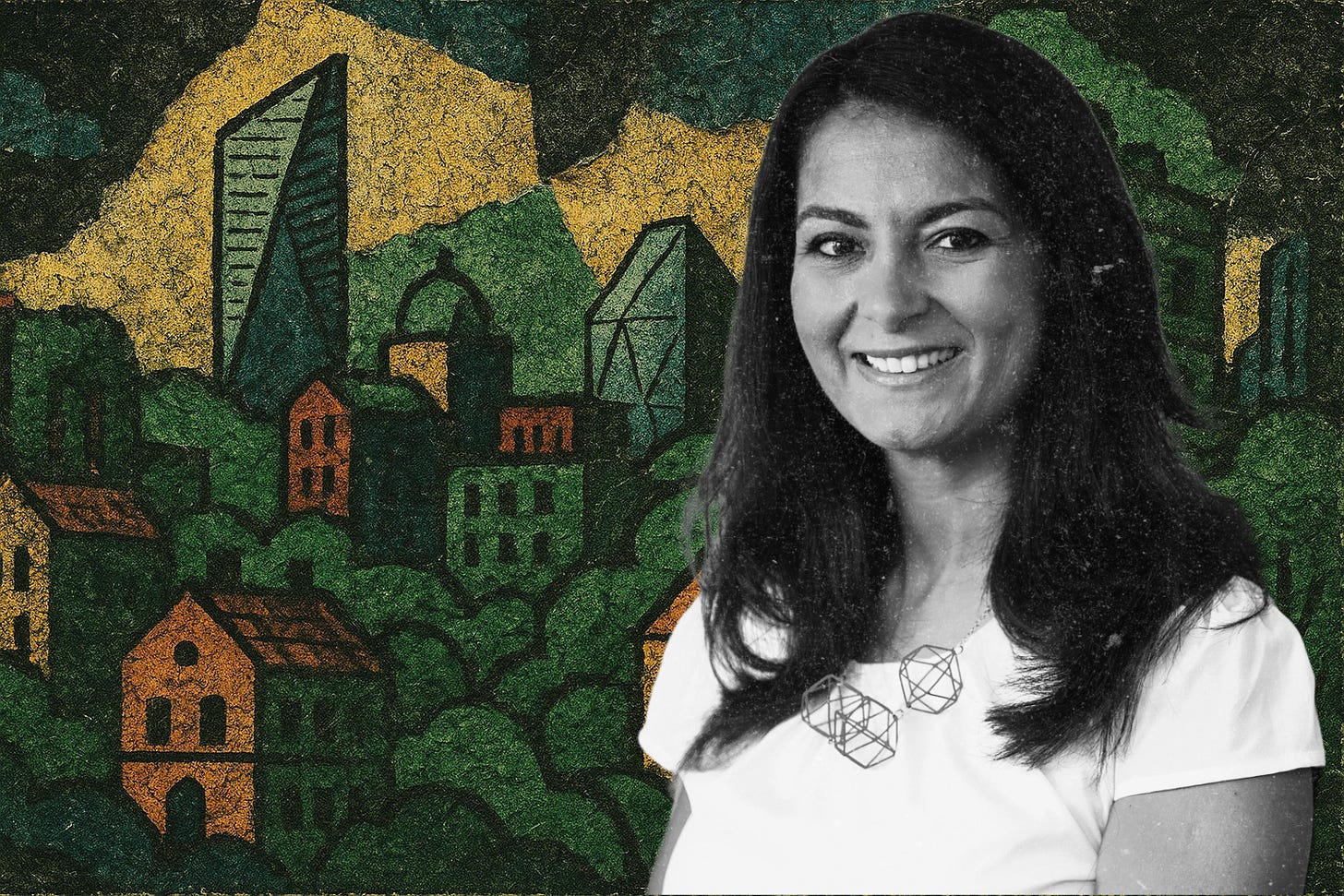🏢 Why sustainable cities start with better data: My interview with Rokia Raslan
Hey folks! AI won’t build sustainable cities for us, but it can help us figure out how to do so. In our Urbi Atlas interview, Rokia Raslan, a professor at UCL, explains how machine learning, retrofits, and smart growth can shape neighbourhoods that support both people and the planet.
What makes an urban neighbourhood truly sustainable?
A sustainable urban neighbourhood supports all forms of life — both the humans who live there and the biodiverse ecosystem it encompasses — without negatively impacting the surrounding environment. This includes energy efficiency, low emissions, and responsible use of materials and policies that enable people to live and work with minimal negative environmental impact.
Urban areas are spreading rapidly: how can we balance this growth with the need to decarbonise the built environment?
Growth doesn’t always have to mean getting bigger — it can mean getting better. For example, growth provides opportunities to construct more sustainable, energy-efficient buildings with lower carbon footprints and to reuse or retrofit older buildings in smarter ways.
Sustainable growth allows us to construct more energy-efficient buildings, use low-carbon materials, and improve existing infrastructure. Growth, therefore, doesn’t have to increase carbon emissions. If planned well, it can accelerate decarbonisation by driving innovation and improvement.
Are there any cities that stand out as examples of growing sustainably?
Not yet — not fully. Most cities in Europe experienced rapid growth during the post-World War II era, long before sustainability was a priority. And in places outside Europe, urbanisation has also largely occurred without much focus on sustainable practices.
However, there are promising shifts. Many northern European cities have moved from car-based transportation to public transport and cycling. In the Netherlands, for instance, we’ve seen a significant redesign of roads to accommodate bicycles and other low-carbon transport modes. Munich has turned roads into green spaces, and in Boston, large concrete areas have been replaced with parks.
How can technologies like machine learning help cities and buildings become more sustainable?
There are so many ways AI and big data can support sustainability. For example, we use machine learning and optimisation tools to model combinations of measures that improve buildings’ energy efficiency. Setting boundaries and objectives lets the computer handle the heavy lifting of finding optimised solutions. It gives us a catalogue of possibilities, which we can use to make informed decisions.
AI also excels at recognising patterns in large, disparate data sets. There’s a wealth of information about our building stock — energy use, site constraints, occupant data — but it’s often scattered and disconnected. AI helps bring all this data together, building a fuller picture and identifying opportunities we might otherwise miss.
It’s particularly useful for pinpointing areas that are more complex to decarbonise, helping us focus on specific challenges. For example, it can highlight regions or building types with unique constraints, giving us a precise basis for developing targeted solutions. Ultimately, AI is a tool that accelerates our understanding and decision-making while complementing human expertise.
What are the biggest challenges cities face when rolling out large-scale sustainability projects?
Every city faces its own challenges. In London, for example, many buildings are what we refer to as “Complex to Decarbonise.” These are often small, old, poorly insulated homes that present specific barriers to retrofitting. Issues like limited space, mixed tenures and ownership within buildings, and high construction costs add to the difficulty. Heritage considerations and the high prevalence of rental properties also complicate matters, as landlords may not have much incentive to invest in retrofit.
In contrast, cities in the Middle East, such as Dubai, face different issues. Many buildings there are “trophy architecture” — large, visually stunning structures often designed with active cooling systems and abundant fossil fuels in mind. These designs weren’t necessarily optimised for the local environment, leading to challenges in decarbonisation.
Many of these buildings were designed by American and European architectural firms, which raises the question: if they had been better informed about the local climate — or if traditional architectural principles and local expertise had been more integral to the process — might the outcomes have been different?
Read the full interview in Urbi Atlas, and check out my feature on urban planning for a sustainable future.
And that’s it for today! Thanks for reading! If you enjoy the newsletter, share it with a friend — or a dozen. And if you really enjoyed it, consider upgrading to a paid subscription: it helps support my work and means a lot.
Elia Kabanov is a science writer covering the past, present and future of technology (@metkere)
Illustration: Elia Kabanov feat. DALL-E.


